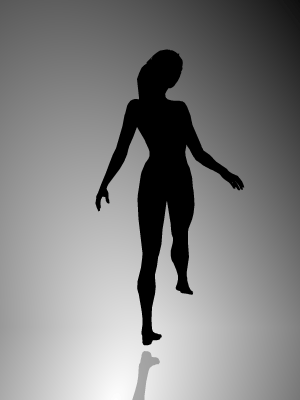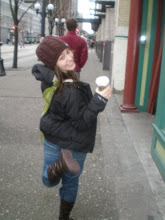 Most people put thought into the things that they eat. If they had a choice they would consume a meal that they find especially tasty over one that is merely nutritious; they would take fruit directly from a tree over the under-ripe Safeway brands; and they would choose the things that are said to make them live longer, healthier lives over the foods that they believe are‘ bad’ for the body. All of this thought goes into what we eat, and yet I have never considered food to be a type of medicine until I began reading Farquhar’s article on “Medicinal Meals”.
Most people put thought into the things that they eat. If they had a choice they would consume a meal that they find especially tasty over one that is merely nutritious; they would take fruit directly from a tree over the under-ripe Safeway brands; and they would choose the things that are said to make them live longer, healthier lives over the foods that they believe are‘ bad’ for the body. All of this thought goes into what we eat, and yet I have never considered food to be a type of medicine until I began reading Farquhar’s article on “Medicinal Meals”. On first examination of the title “Medicinal Meals” I immediately pictured a meal substitute in the form of a pill (as seen above), because the words medicine, pills, and drugs are nearly synonymous in my vocabulary. I assumed that the article would describe the biomedically induced tendency to pop pills at the slightest discomfort, as well as the American fad of replacing sit-down meals with on-the-go, condensed snack bars and energy drinks. While Farquhar’s article does address these ideas, it does so in an indirect fashion by examining the contrasting holistic view of Chinese medicine. Many cultures have long believed that a balanced diet is the first and most important step to a healthy body and preventative treatment of illness. Our culture’s restrictive idea of medicine in pill form is unusual in this respect. But even by western standards of medicine it is actually quite easy to compare food to the pills that we consume. Both enact a change in our bodies to fight illness; indeed the change that food enacts on our bodies is more immediate and noticeable than that of drugs. Even televised ads for eating certain foods in order to effect change in our lives could be seen as self-prescriptions, but these links between drugs and food are not solidified in western culture.
On first examination of the title “Medicinal Meals” I immediately pictured a meal substitute in the form of a pill (as seen above), because the words medicine, pills, and drugs are nearly synonymous in my vocabulary. I assumed that the article would describe the biomedically induced tendency to pop pills at the slightest discomfort, as well as the American fad of replacing sit-down meals with on-the-go, condensed snack bars and energy drinks. While Farquhar’s article does address these ideas, it does so in an indirect fashion by examining the contrasting holistic view of Chinese medicine. Many cultures have long believed that a balanced diet is the first and most important step to a healthy body and preventative treatment of illness. Our culture’s restrictive idea of medicine in pill form is unusual in this respect. But even by western standards of medicine it is actually quite easy to compare food to the pills that we consume. Both enact a change in our bodies to fight illness; indeed the change that food enacts on our bodies is more immediate and noticeable than that of drugs. Even televised ads for eating certain foods in order to effect change in our lives could be seen as self-prescriptions, but these links between drugs and food are not solidified in western culture. While the west draws a fine line between the things that we eat for their energetic value (to stave of starvation) and the things that we eat to cure pain (drugs), Chinese culture embraces the similarities. To find a cookbook in a Chinese bookstore one can look either in the cookbook section or in the health care section (Farguhar 2002:51). What has western medicine done so differently to make us give very little credit to the curative properties of our food? To put it simply, western medicine is anatomically based in muscles and microorganisms, while Chinese medicine “cares little about anatomy…as a functional medicine that reads the manifestations of physiological and pathological changes without resorting to models of fixed structural relations” (Ibid. 64). The Chinese holistic view looks to the balances of the body’s elements rather than its physiological malfunctions. And it is for this reason that the west gives the idea of the taste of our medicines much less thought than in Chinese herbal treatment.
While the west draws a fine line between the things that we eat for their energetic value (to stave of starvation) and the things that we eat to cure pain (drugs), Chinese culture embraces the similarities. To find a cookbook in a Chinese bookstore one can look either in the cookbook section or in the health care section (Farguhar 2002:51). What has western medicine done so differently to make us give very little credit to the curative properties of our food? To put it simply, western medicine is anatomically based in muscles and microorganisms, while Chinese medicine “cares little about anatomy…as a functional medicine that reads the manifestations of physiological and pathological changes without resorting to models of fixed structural relations” (Ibid. 64). The Chinese holistic view looks to the balances of the body’s elements rather than its physiological malfunctions. And it is for this reason that the west gives the idea of the taste of our medicines much less thought than in Chinese herbal treatment. Of course I am not referring to the literal taste of medicine, (bad tasting things are known worldwide to be given as medicine) but rather the five flavors of pungent, sweet, sour, bitter, and salty. These flavors are not simply syrups that we can pour on our food, and do not merely correspond to the reactions of our taste buds. They have fundamental characteristics which make up the basis of a Chinese pharmacy. The story goes that “Shen Nong, the sage king and mythical founder of herbal medicine ‘tasted one hundred herbs’ and on the basis of this experience produced the first material medica text.” (Ibid. 63). The flavors that Shen Nong categorized for future treatment were not just for the asthetics of food but could induce lasting changes and responses in the body.
Of course I am not referring to the literal taste of medicine, (bad tasting things are known worldwide to be given as medicine) but rather the five flavors of pungent, sweet, sour, bitter, and salty. These flavors are not simply syrups that we can pour on our food, and do not merely correspond to the reactions of our taste buds. They have fundamental characteristics which make up the basis of a Chinese pharmacy. The story goes that “Shen Nong, the sage king and mythical founder of herbal medicine ‘tasted one hundred herbs’ and on the basis of this experience produced the first material medica text.” (Ibid. 63). The flavors that Shen Nong categorized for future treatment were not just for the asthetics of food but could induce lasting changes and responses in the body. This method of invoking change in the body explains why Chinese medicine did not first turn to the anatomy of the body for answers. Without dissection or diagrams, the symptoms described by the patient could be treated by balances of flavors in a medicinal brew. In turn, preventative care was not as complicated as a nutritional food pyramid, but rather a day to day process of balancing the flavors of food in daily life. In China the concept of ‘you are what you eat’ is more than just a slogan to scare obese people away from fatty cheeseburgers. It is a process ingrained so deeply that even when something goes wrong in the body, a strong brew built off of individual diet and symptoms restores balance to bodily systems.
This method of invoking change in the body explains why Chinese medicine did not first turn to the anatomy of the body for answers. Without dissection or diagrams, the symptoms described by the patient could be treated by balances of flavors in a medicinal brew. In turn, preventative care was not as complicated as a nutritional food pyramid, but rather a day to day process of balancing the flavors of food in daily life. In China the concept of ‘you are what you eat’ is more than just a slogan to scare obese people away from fatty cheeseburgers. It is a process ingrained so deeply that even when something goes wrong in the body, a strong brew built off of individual diet and symptoms restores balance to bodily systems. The idea of individualized medicine is not foreign to western culture. Indeed everyone would love to be given a miracle pill, or ‘silver bullet’ to put their ailing bodies back on the right track. This is not to say that the practice of biomedicine is changing to lean in a more holistic direction. Rather, researchers in the field of genetics are beginning to think that they could tailor drugs to match our DNA, our individual genetic makeup. Is this a modern version of Shen Nong’s ancient traditions? Not in the slightest. But the idea of new individualized medicine combined with the fears that the non-scientists of the west still hold against genetic modification (as illustrated in Chapter 5 of Chen’s Food, Medicine, and the Quest for Good Health) may be enough to create a niche for Chinese medicine. The west has recently seen fads in yoga and acupuncture, as well as the development of a naturopathic clinic. Especially in light of the recent obesity scare, it is possible that the next stage in our acceptance of other forms of healing may be to embrace the saying ‘you are what you eat’. We may consider the effects of our food beyond an image of physical fitness and perfection, leading to a change in what we require from the medical profession.
The idea of individualized medicine is not foreign to western culture. Indeed everyone would love to be given a miracle pill, or ‘silver bullet’ to put their ailing bodies back on the right track. This is not to say that the practice of biomedicine is changing to lean in a more holistic direction. Rather, researchers in the field of genetics are beginning to think that they could tailor drugs to match our DNA, our individual genetic makeup. Is this a modern version of Shen Nong’s ancient traditions? Not in the slightest. But the idea of new individualized medicine combined with the fears that the non-scientists of the west still hold against genetic modification (as illustrated in Chapter 5 of Chen’s Food, Medicine, and the Quest for Good Health) may be enough to create a niche for Chinese medicine. The west has recently seen fads in yoga and acupuncture, as well as the development of a naturopathic clinic. Especially in light of the recent obesity scare, it is possible that the next stage in our acceptance of other forms of healing may be to embrace the saying ‘you are what you eat’. We may consider the effects of our food beyond an image of physical fitness and perfection, leading to a change in what we require from the medical profession.Works Cited
Chen, Nancy, 2009. Food, Medicine, and the Quest for Good Health. New York: Columbia University Press. Pp. 12-52, 79-107.
Farquhar, Judith, 2002. Medicinal Meals. IN Appetites: Food and Sex in Post-Socialist China. Durham: Duke University Press. Pp. 47-77.
Images:
http://www.cartoonstock.com/newscartoons/cartoonists/mfl/lowres/mfln275l.jpg
http://3.bp.blogspot.com/_1M-ujI7v_mM/SffPoXKIrjI/AAAAAAAAAHQ/xTe5ukk504w/s320/diet,dinner,fork,knife,pharmaceutical,pill-0401727d675fe7dd693985d1a43cbc8a_h.jpg
http://www.blisstree.com/geneticsandhealth/files/2006/05/personalized%20medicine.jpg
http://www.buttercuppopcorn.com/images/prem%20snocone%20syrupCOB.jpg
http://static.guim.co.uk/sys-images/Guardian/Pix/pictures/2009/6/2/1243900831840/Spoonful-of-pills-and-cap-002.jpg
http://www.istockphoto.com/file_thumbview_approve/6382983/2/istockphoto_6382983-meal-of-pills.jpg






